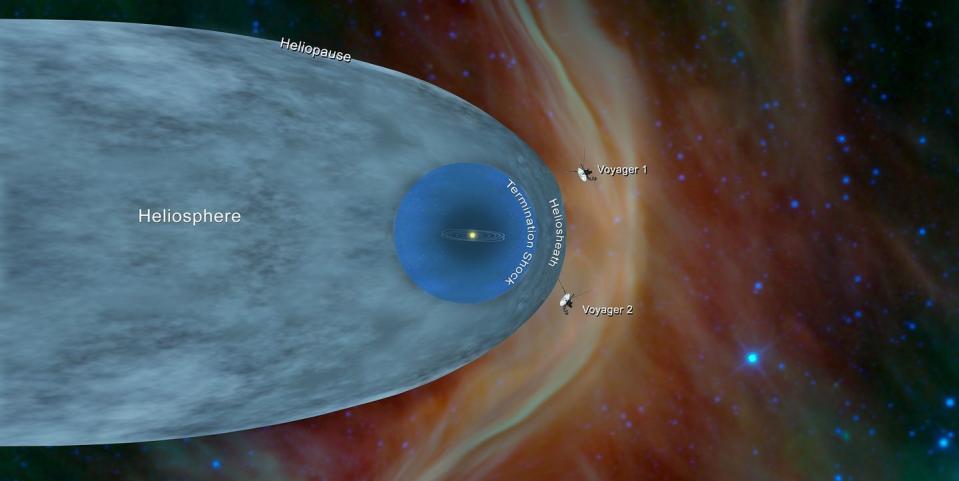We Finally Know What Happened When Voyager 2 Reached Interstellar Space

Scientists have finally analyzed data from Voyager 2’s journey to interstellar space and discovered remarkable insight into conditions at the edge of our solar system.
The spacecraft reached the interstellar boundary between our solar system and interstellar space in 2018. Voyager 1 reached the boundary in 2012.
Both spacecraft were launched in 1977, and have far surpassed scientists' expectations.
Scientists have finally analyzed data from Voyager 2’s journey to interstellar space and discovered a number of surprising differences—plus a few strange similarities.

Voyager 1 and 2 launched in August and October of 1977, respectively, and set out to explore the far reaches of the solar system and beyond. The spacecraft have revealed a vast amount of insight into distant planets and snapped pictures of previously undiscovered moons. Still, more than 40 years after their launch, they continue to provide scientists with an unparalleled look at the universe.
In 2012, Voyager 1 became the first spacecraft to reach interstellar space. Last year, Voyager 2 joined its companion in the interstellar medium, reaching the boundary set 119 times the Earth–sun distance away from Earth. The transition from our solar system to interstellar space, the researchers say, may take less than a day to cross. The data from Voyager 2’s crossing was published November 4 in a series of five papers in Nature Astronomy.
The heliopause is the theoretical boundary at which the sun’s solar wind meets interstellar winds, which are shot out from supernovae that have exploded millions of years ago. Additionally, galactic cosmic rays try to flow into our solar system, but only 30 percent of these rays actually reach Earth. Voyager 1 and 2 were also able to study changes in the magnetic fields within and outside of our solar system.
The two spacecraft reached interstellar space during different periods of solar activity, meaning conditions along the boundary were markedly different. Voyager 1 reached the interstellar boundary during the sun’s solar minimum, whereas Voyager 2 reached the boundary during the solar maximum, a period of heightened activity. Additionally, unlike its quicker counterpart, Voyager 2’s mission has largely taken place in Earth’s southern hemisphere.
The researchers also discovered that solar material was “leaking” out into the interstellar medium. “That was very different than what happened with Voyager 1, where hardly any material was leaking out,” said Tom Krimigis of John’s Hopkins’s Applied Physics Laboratory in an October 31 press conference.
In the case of Voyager 1, the team saw the opposite, where interstellar particles leaked into our solar system. The team hopes to reconvene to take a closer look at their data in the near future to understand how and why these particles slip out of the grasp of our solar system.
Another perplexing discovery? The direction of the magnetic fields both inside and outside of the heliopause is aligned, as was the case with Voyager 1. Leonard Burlaga of NASA Goddard Space Flight Center said scientists can dismiss the alignment of the magnetic fields once, but twice would be a remarkable coincidence. The strength of the magnetic field was stronger in interstellar space, the Voyager 2 found.
The scientists also discovered that the heliopause itself is much thinner and smoother than expected, and that the interstellar medium tucked close to the boundary layer, where solar and interstellar winds meet, is much hotter and unpredictable than expected. This newest research also revealed that the boundary layer itself may be more complex than initially thought, with multiple layers of different temperature, density, and speed.
Voyager 1 and 2 have roughly five years before they'll lose the use of their scientific instruments, said Ed Stone of the California Institute of Technology during the press conference. "When the two voyagers were launched, the space age was only 20 years old, Stone said. "So it was hard to know at that time that anything could last over 40 years."
There's still a lot left to explore, and the data dump has sparked a desire to explore faster, farther, and deeper into interstellar space.
You Might Also Like

